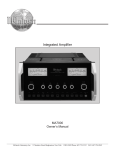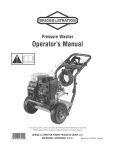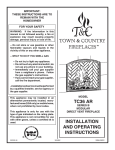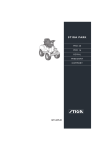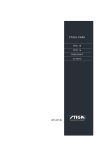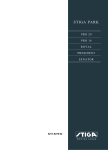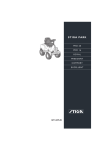Download Stiga 8211-0223-07 Lawn Mower User Manual
Transcript
ST I GA P A R K PRO 20 PRO 16 ROYAL PRESIDENT SENATOR 8211-0276-02 PARK 20 16 19 2. 1. 6 2 4 5 3 1 3. PARK 10 11 7 11 14 9 7 9 4. Senator 5. President 13 11 14 11 14 8 8 7 9 7 9 16 15 15 6. Royal 7. Pro 16 13 14 13 8 9 9 7 14 8 7 12 12 15 16 15 16 18 17 8. Pro 18 9. Pro 20 PARK 1 2 2 1 10. 11. 12. 13. Senator - President 14. Royal 15. Pro 16 - Pro 18 - Pro 20 OPEN 16. 17. Royal PARK 18. Pro 16 - Pro 18 - Pro 20 19. Senator - President 20. Royal 21. Pro 16 - Pro 18 - Pro 20 0.75 mm 22. Pro 18 - Pro 20 23. 24. Senator - President 25. Royal - Pro 16 - Pro 18 - Pro 20 PARK 26. 27. MAX 28. 29b. Pro 16 - Pro 18 - Pro 20 29a. President - Royal GB ENGLISH GENERAL This symbol indicates WARNING. Personal injury and/or damage to property may result if the instructions are not followed carefully. You must read these instructions for use and the accompanying pamphlet “SAFETY INSTRUCTIONS” carefully, before starting up the machine. 1. IMPLEMENT LIFTER A pedal for raising front-mounted accessories to the transport position. To lift up the accessory, press the pedal down as far as it will go. Then release the pedal, the implement lifter is now locked in the lift position. To lower the accessory, press the pedal down so that the lock is released. Lower the implement lifter to the working position by slowly lifting your foot from the pedal. SYMBOLS 2. LIFT HELP (Pro18 - Pro20) The following symbols are displayed on the machine in order to remind you about the safety precautions and attention necessary when using the machine. The implement lifter is complemented with adjustable lift help in the form of a gas spring. This facilitates lifting heavy accessories. The symbols mean: Warning! Read the instruction book and safety manual before using the machine. Warning! Beware of objects being flung out. Keep spectators away. Warning! Always use hearing protectors. Warning! This machine is not designed to be driven on public roads. Warning! The machine, equipped with original accessories, must not be driven in any direction on slopes with a gradient greater than 10º. Use this to increase/decrease the lift help. Screw anti-clockwise to increase the lift help if heavy accessories are being used. Screw clockwise to decrease the lift help if lighter accessories are being used. 3A. SERVICE BRAKE/CLUTCH (Senator) A pedal that combines both service brake and clutch. Three positions: 1. Pedal released – forward drive engaged. The machine will move if a gear is engaged. Service brake not activated. Warning! Clamp risk. Keep hands and feet well away from the articulated steering joint. 2. Pedal depressed halfway – forward drive disengaged, gear shifting can be performed. Service brake not activated. Warning! Risk for burn injuries. Do not touch the silencer/catalytic converter. 3. Pedal fully depressed – forward drive disengaged. Service brake fully activated. CONTROLS AND INSTRUMENTS Items 1 - 20, see figures 1 - 9 8 Under the engine casing, on the top of the rear bumper, there is a setting crank. NOTE! You must never regulate the operating speed by slipping the clutch. Use a suitable gear instead, so that the right speed is obtained. 3B. SERVICE BRAKE (President Royal - Pro16 - Pro18 - Pro20) A pedal that acts upon the machine’s braking sys- GB ENGLISH tem. There are 3 positions: 1. Pedal released – service brake not activated. 2. Pedal depressed halfway – forward drive disengaged. Service brake not activated. 3. Pedal fully depressed – forward drive disengaged. Service brake fully activated. 4. PARKING BRAKE An inhibitor that can lock the brake pedal in the depressed position. Depress the brake pedal fully. Move the inhibitor to the right and then release the brake pedal. 7. THROTTLE/CHOKE CONTROL A control for setting the engine speed and to choke the engine when starting from cold (the latter does not apply to Royal-Pro16-Pro18-Pro20 which have separate choke control – see item 8). 1. Choke – for starting a cold engine. The choke is located in top of groove (does not apply to Royal- Pro16-Pro18-Pro20). 2. Full throttle – when the machine is in operation, full throttle should always be used. 3. Idle running. 8. CHOKE CONTROL (Royal - Pro16 Pro18 - Pro20) The parking brake is released by pressing the brake pedal. The spring-loaded inhibitor slides to one side. A pull-type control to choke the engine when starting from cold. Make sure that the parking brake is released when operating the machine. 1. Control fully pulled out – choke valve in carburettor closed. For starting cold engine. 5. DRIVE PEDAL (President - Royal Pro16 - Pro18 - Pro20) A pedal that activates the variable transmission. 1. Depress the pedal with the ball of your foot – the machine moves forwards. 2. No load on the pedal – the machine is stationary. 3. Depress the pedal with your heel – the machine reverses. The drive pedal regulates the speed. The more pressure applied, the faster the machine will move. 6. ADJUSTABLE STEERING WHEEL (President - Royal - Pro16 - Pro18 Pro20) The steering wheel can be adjusted vertically in 5 positions. Press in the inhibitor on the steering column and raise or lower the steering wheel to the desired position. Do not adjust the steering wheel during operation. 2. Control pushed in – choke valve open. For starting warm engine and when operating the machine. Never operate the machine with the choke pulled out when the engine is warm. 9. IGNITION LOCK/SPOTLIGHT Ignition lock used for starting/stopping the engine. Also includes switch for spotlight (Senator does not have a spotlight). Four positions: 1. Stop position – the engine is shortcircuited. The key can be removed. 2. Operating position – spotlight activated. 3. Operating position – spotlight not activated. 4. Start position – the electric start motor is activated when the key is turned to the spring-loaded start position. Once the engine has started, let the key return to operating position 3. To turn on the spotlight, turn the key to position 2. NOTE! If the key is turned from the stop posi9 GB ENGLISH tion to operating position 2, the spotlight is activated. This uses up battery power. Do not leave the machine with the key in position 2 (applies to Pro16-Pro18-Pro20). tion. 10. GEAR LEVER (Senator) The differential lever is of greatest use when the rear wheels are unevenly loaded. For example, when driving across a slope, where the upper rear wheel is not as loaded, as wheel as when turning sharp corners where the inner rear wheel bears a lesser load. A lever for selecting one of the five forward gears in the gearbox (1-2-3-4-5), neutral (N) or reverse (R). The clutch pedal must be kept pressed in when changing gear. NOTE! You must make sure the machine is quite stationary before changing from reverse to forward gear or vice versa. If a gear does not engage immediately, release the clutch pedal and then press it in once again, then engage the gear once again. Never force a gear in. 2. Backward position – the differential inhibitor is engaged. For normal operation. Works for both forward and reverse drive. When driving during the winter on slippery surfaces, the drive capacity is improved if snow chains are not used. When the differential inhibitor is engaged, the steering is heavy. Avoid turning the steering wheel! 11. POWER TAKE-OFF (Senator President - Royal - Pro16) 14. HOUR METER (President - Royal - Pro16 - Pro18 - Pro20) A lever for engaging and disengaging the power take-off for driving front-mounted accessories. There are two positions: Indicates the number of working hours. Only works when the engine is running. 1. Lever in forward position – power takeoff disengaged. 2. Lever in backward position - power take-off engaged. 12. POWER TAKE-OFF (Pro18 Pro20) Switch for engaging/disengaging the electromagnetic power take-off for driving front-mounted accessories. There are two positions: 1. Press the front part of the switch – the power take-off is engaged. The symbol lights up. 2. Press the rear part of the switch – the power take-off is disengaged. 13. DIFFERENTIAL INHIBITOR (Pro16 - Pro18 - Pro20) Lever for engaging the differential inhibitor. This improves the towing capacity by locking the rear wheels so that both wheels drive simultaneously. There are two positions: 1. Forward position – the differential inhibitor is not engaged. For normal opera10 15. CRUISE CONTROL (Royal - Pro16 - Pro18 - Pro20) A switch for activating the cruise control. The function of the cruise control allows the drive pedal (5) to be locked in the desired position. You do not need to use your right foot. 1. Press down the drive pedal until the desired speed is obtained. Then press the front part of the switch to activate the cruise control. The symbol will light up. 2. Disengage the cruise control by pressing the rear part of the switch. 16. CUTTING HEIGHT ADJUSTMENT (Pro16 - Pro18 - Pro20) The machine is equipped with a control for using the mower deck with electrical cutting height adjustment (available as an accessory). The switch is used to adjust the cutting height in continuously variable positions. The contact used for connecting the mower deck is mounted on the right side, in front of the front tyre (fig. 2). 17. REAR RAKE (Pro20) The machine has been designed for electrical ad- ENGLISH justment of a rear rake (available as an accessory). The switch is used to raise and lower the rear rake. 1. Mowing Using mower deck 13-2927 (107M), 13-2917 (110S), 13-2915/13-2921 (121M) or flail mower 13-1977. Connection cables for the rake are located to the rear of the machine, to the left on the top of the bumper (Pro16 and Pro18 are prepared for a rear rake). 2. Sweeping 18. SAND SPREADER (Pro20) 3. Snow clearance The machine has been designed for electrical adjustment of a sand spreader (available as an accessory). The switch is used to start and stop the 12V spreader. A connection contact for the sand spreader is located to the rear of the machine, to the left on the top of the bumper (Pro16 and Pro18 are prepared for a sand spreader). 19. DISENGAGING LEVER (President - Royal - Pro16 - Pro18 - Pro20) A lever for disengaging the variable transmission. Enables the machine to be moved by hand without the help of the engine. There are two positions: 1. Lever moved back – transmission engaged for normal operation. 2. Lever moved forward – transmission disengaged. The machine can be moved by hand. To avoid damage to the transmission, do not tow the machine for any great distance. 20. FUEL GAUGE/FUEL CAP Fuel cap with built-in fuel gauge that indicates how much fuel there is in the fuel tank. (applies to Royal-Pro16-Pro18Pro20) Senator and President have a fuel cap without a fuel gauge. The fuel tank has a capacity of 11.5 l. AREAS OF USE GB Using brush unit 13-1933 or collector brush unit 13-1939. Use of dust guard 13-1936 is recommended with the first option. Using snow blade 13-1916 or snow thrower 131948. Snow chains 13-1956 (16”)/13-0902 (17”) and wheel weights 13-1982 are recommended. 4. Grass clipping and leaf collection Using towed collector 13-1978 (30”) or 131950 (42”). 5. Grass and leaf transport Using dump cart 13-1979 (Standard), 13-1988 (Maxi) or 13-1992 (Combi). 6. Sand spreading Using sand spreader 13-1975. Can also be used for spreading salt. Snow chains 13-1956 (16”)/ 13-0902 (17”) and wheel weights 13-1982 are recommended. 7. Weeding on gravel paths Using front mounted hoe 13-1944 and rearmounted rake 13-1969. 8. Lawn edge trimming Using edge trimmer 13-0905. 9. Moss scarification Using moss scarifier 13-1984. The maximum vertical load on the towing hitch must not exceed 100 N. The maximum over-run load on the towing hitch from towed accessories must not exceed 500 N. NOTE! Before using a trailer – contact your insurance company. NOTE! This machine is not intended to be driven on public roads. The machine may only be used for the following tasks using the STIGA accessories stated. 11 GB ENGLISH START AND OPERATING ENGINE CASING To inspect and maintain the engine and battery, remove the engine casing as follows: 1. Unscrew the fuel cap/fuel gauge. 2. Carefully lift off the engine casing (fig. 10). Assembly: 1. Make sure that the front part of the casing fits into the track in the U-shaped attachment on the machine (fig. 11). 2. Place the casing over the lip on each side (fig. 11). 3. Make sure that the pins on the back edge of the casing go down into the respective holes (fig. 12). 4. Finally, screw in the fuel cap/fuel gauge. Do not use the machine without first fitting the engine casing, otherwise there is a risk of burn injuries or crushing accidents. CHECKING THE ENGINE OIL LEVEL On delivery, the crankcase is filled with SAE 30 oil. Check the oil level every time before using to ensure that it is correct. The machine should be standing on level ground. Wipe clean round the oil dipstick, remove it and wipe off. Push down the dipstick fully and screw it back in. Then unscrew it and pull it up again. Read off the oil level. Top up with oil to the “FULL” mark, if the level comes below it (figs. 13 - 15). CHECKING THE TRANSMISSION OIL LEVEL (President - Royal - Pro16 - Pro18 - Pro20) The transmission is filled with SAE 10W-40 oil when the machine is delivered from the factory, Check the oil level every time before using to ensure it is correct. The machine should be standing on level ground. FILLING THE FUEL TANK Read off the oil level in the reservoir (fig. 29). It should be between the MAX and MIN marks. If necessary, top up with SAE 10W-40 (20W-50) oil. Always use lead-free petrol. Never use oil-mixed petrol. SAFETY SYSTEM NOTE! Bear in mind that petrol is a perishable; do not purchase more petrol than can be used within thirty days. This machine is equipped with a safety system that consists of: - a switch on the gearbox (only Senator). - a switch at the brake pedal. - a switch in the seat mounting (Senator, President) or the seat bracket (other models). - a switch at the power take-off engagement. Environmentally friendly petrol can be used. This type of petrol has a composition that is less hazardous for people and nature. Petrol is highly inflammable. Always store petrol in containers that are made especially for this purpose. Only fill or top up with petrol outdoors, and never smoke when filling or topping up. Fill with petrol before starting the engine. Never remove the filler cap or fill with petrol while the engine is running or still warm. Never completely fill the fuel tank. Leave an empty space (= at least the entire filler tube plus 1 - 2 cm at the top of the tank) to allow the petrol to expand when it warms up without overflowing (fig. 28). 12 In order to start the machine, the following are necessary: - gear lever in neutral (only Senator). - brake pedal pressed down. - driver sitting on seat. - power take-off engagement lever at lowest setting (i.e. power take-off disengaged). Always check the operation of the safety system before using the machine! With the engine operating and the driver sitting on the seat, check in the following way: - select a gear, lift your weight off the seat – the engine must stop (applies to Senator). - press the drive pedal so that the machine starts GB ENGLISH - - - - to move, release the drive pedal – the machine must stop (applies to President, Royal, Pro16, Pro18, Pro20). press the drive pedal so that the machine starts to move, engage the cruise control, lift your weight off the seat – the machine must stop (applies to Royal, Pro16, Pro18, Pro20). press the drive pedal so that the machine starts to move, engage the cruise control, press the brake pedal – the machine must stop (applies to Royal, Pro16, Pro18, Pro20). engage the power take-off, lift your weight off the seat – the engine must stop (applies to Senator, President, Royal, Pro16). engage the power take-off, lift your weight off the seat, the power take-off must be disengaged (applies to Pro18, Pro20). Do not use the machine if the safety system does not work! Take the machine to a service agent for inspection! STARTING ENGINE 1. Open the fuel cock (fig. 16). 2. Make sure that the sparking plug cable is properly in place. in gradually if it has been used. 9. When starting from cold, do not make the machine work under load immediately, but let the engine run for some minutes first. This will allow the oil to warm up. When in use, always operate the engine at full throttle. STOPPING Disengage the power take-off and apply the parking brake. Allow the engine to idle 1 - 2 mins. Stop the engine by turning off the ignition key. Shut off the petrol cock. This is particularly important if the machine is to be transported on a trailer for example. If the machine is left unattended, remove the lead from the spark plug. Also remove the starter key. The engine may be very warm immediately after it is shut off. Do not touch the silencer, cylinder or cooling flanges as it can cause burns and injury. 3. Check to make sure that the power take-off is disengaged. CATALYTIC CONVERTER (Pro18 Pro20) 4a. Senator: Put the gear lever in neutral The catalytic converter gets very hot during operation. The heat remains for a long time after the engine has been stopped. Be aware of fire risk. 4b. President-Royal-Pro16-Pro18-Pro20: Do not keep your foot on the drive pedal. Do not park in close proximity to inflammable objects. Do not cover the machine until the catalytic converter has cooled down. 5a. Senator-President: Starting cold engine – put the throttle control in the choke position. Starting warm engine – put the throttle control at full throttle (approx. 1 cm behind the choke position). STEERING AID (Pro20) 5b. Royal-Pro16-Pro18-Pro20: Put the throttle control at full throttle. Starting cold engine – pull the choke control out fully. Starting warm engine – do not touch the choke control. Built-in function in order to facilitate steering. The operator only has to turn the steering wheel gently. An hydraulic torque amplifier creates the remaining force. 6. Depress the brake pedal fully. As opposed to a normal servo steering (e.g. in a car), the steering aid has a limited capacity. This means that it has some characteristics that might be considered negative: - at a low engine rpm or in situations where extra steering force is needed, steering can be considered to be “jumpy”. - the machine should always be moving when the steering is used. Avoid turning the steering 7. Turn the starter key and start the engine. 8a. Senator-President: Once the engine has started, move the throttle control gradually to full throttle if the choke has been used. 8b. Royal-Pro16-Pro18-Pro20: Once the engine has started, push the choke control 13 GB ENGLISH wheel when the machine stands completely still and the accessory is in the lowered working position. The steering is adapted in order to produce better results at a normal working speed. Even when the engine is not running, the steering works. However, it is harder to turn in this case, if the machine is to be manoeuvred manually. OPERATING Make sure that there is the correct quantity of oil in the engine when driving on slopes (oil level on “FULL”). Be careful when driving on slopes. No sudden starting or stopping when moving up or down a slope. Never drive across a slope. Move from the top and down, and from down to the top. The machine, equipped with original accessories must not be driven on slopes greater than 10º in any direction. Reduce the speed on slopes and when moving the machine in sharp turns to prevent the machine from tipping over or that you lose control over the machine. Do not turn the steering wheel to full lock when driving in top gear and at full throttle, as the machine can easily topple over. Keep hands and feet well away from articulated steering joint and seat bracket to avoid having them squeezed. Never operate the machine without the engine casing. SERVICE AND MAINTENANCE SERVICE PROGRAM In order to keep the machine in good condition, as regards reliability and operational safety as well as from an environmental perspective, STIGA’s service program should be followed. The contents of this program can be found in the attached service log. We recommend that an authorised workshop carries out every service. This guarantees that the 14 work is performed by trained personnel and with original spare parts. At every service, the service log should be stamped. A “fully stamped” service log is a valuable document that improves the machine’s secondhand value. PREPARATIONS Unless otherwise stated, all service and maintenance must be performed on a machine that is standing still where the engine is not running. Prevent the machine from rolling, by always applying the parking brake. Prevent involuntary engine start by always stopping the engine, loosening the spark plug cable from the sparking plug and earthing it. Remove the minus (-) cable from the battery. CLEANING To reduce the risk of fire, keep the engine silencer/catalytic converter, battery and fuel tank free from grass, leaves and oil. To reduce the risk of fire, regularly check the machine for oil and/or fuel leakage. When washing the machine with water under high pressure, do not point the jet directly at the transmission. Do not point jets of water directly at the engine, use a brush or compressed air in order to clean it. CHANGING ENGINE OIL Change the oil for the first time after 8 hours running (Senator and President after 5 hours), and then after every 50 hours running or once a year. Change oil when the engine is warm. Always use a good grade of oil (service grade SF, SG or SH). Change the oil more often (after 25 hours of running or at least once a season) if the engine has to operate under demanding conditions or if the ambient temperature is high. ENGLISH The engine oil may be very warm if it is drained off directly after the engine is shut off. Therefore, allow the engine to cool a few minutes before draining the oil. GB AIR FILTER - ENGINE Clean the foam pre-filter every 3 months or after every 25 hours of operation, whichever comes first. 1. Oil drain pipe (metal): Unscrew the oil drain plug at the end of the pipe. Clean the paper filter insert once a year or after every 100 hours of operation, whichever comes first. Let the oil run out into a collection vessel. Then take the oil to a recycling station. Do not allow oil to get on the V-belts. NOTE! The filters should be cleaned more often if the machine operates on dusty ground. 2. Screw up the oil drain plug. Make sure that the fibre gasket and the O-ring inside the plug are not damaged and that they are in the correct place. 1. Loosen the wing nut under the fuel tank and move it backwards (fig. 16). Also loosen the battery to make it easier to get at the air filter (applies to Pro16-Pro18-Pro20). 3. Remove the dipstick and fill up with new oil. Oil capacity: Senator, President – 1.4 l Royal – 1.9 l (including oil filter) Pro16, Pro18, Pro20 - 1.7 l (including oil filter) Oil type summertime (> 4º C): SAE-30 (SAE 10W-30 can also be used. However, oil consumption may increase somewhat if 10W/30 is used. Therefore, check the oil level more regularly if you use this type of oil). 2. Remove the protective cover of the air filter (fig. 19 - 21). 3. Dismantle the paper filter insert and the foam pre-filter. Make sure that no dirt gets into the carburettor. Clean the air filter housing. 4. Wash the pre-filter in liquid detergent and water. Squeeze dry. Pour a little oil on the filter and squeeze in the oil. Oil type winter (< 4º C): SAE 5W-30 (if this oil is not available, use SAE 10W-30). 5. Clean the paper filter insert as follows: Knock it lightly against a flat surface. If the filter is very dirty, change it. Use oil without any additives. 6. Assemble in the reverse order. Do not fill too much oil as this can result in overheating the engine. Petroleum-based solvents such as kerosene must not be used for cleaning the paper filter insert as these can destroy the filter. After filling up the oil, start the engine and idle for 30 seconds. Stop the engine. Wait for 30 seconds and then check the oil level. Check to see if there is any oil leakage. If necessary, fill up the oil up to the “FULL” mark. OIL FILTER - ENGINE (Royal - Pro16 - Pro18 - Pro20) Replace the oil filter after every 100 hours of operation or once a season. Before screwing the new filter, oil the filter gasket with engine oil. Screw the filter by hand, until the filter gasket touches the filter attachment. Then tighten ½ to ¾ of a full turn (fig. 17 - 18). Start the engine and idle to see if any leakage occurs. Switch off the engine, check the oil level. If necessary, fill up the oil up to the “FULL” mark. Do not use compressed air for cleaning the paper filter insert. The paper filter insert must not be oiled. AIR FILTER - CATALYTIC CONVERTER (Pro18 - Pro20) Clean the catalytic converter’s air filter every 3 months or after every 25 hours of operation, whichever comes first. 1. Remove the cover by pressing in the locking mechanism with a screwdriver, etc. (fig. 22). 2. Remove the foam filter and wash it in liquid detergent and water. Squeeze dry. Pour a little oil on the filter and squeeze in the oil. 3. Replace the filter and snap the lock into place. SPARKING PLUG Only use a Briggs & Stratton sparking tester to 15 GB ENGLISH check the spark of the sparking plug(s) (fig. 23). Clean the sparking plug after every 100 hours of operation or once a season. For replacing a sparking plug, a sparking plug sleeve A and a torsion pin B are provided in the accessories bag. The engine manufacturer recommends: Senator-President: Champion J19LM Royal-Pro16-Pro18-Pro20: Champion RC12YC The correct distance between the electrodes is 0.75 mm. COOLING AIR INTAKE - ENGINE The engine is air-cooled. A blocked cooling system can damage the engine. The engine should be cleaned at least once a year or every 100 hours of operation. Remove the fan casing. Clean the cooling fins on the cylinder, the fan and the rotating protective grille (fig. 24 - 25). Clean more frequently if mowing dry grass. BATTERY Check the acid level regularly. The acid level should be between “UPPER “ and “LOWER” on the battery. When adjusting the level, only use distilled water (battery water). The battery acid is extremely corrosive and can cause burns and injuries to skin and clothing. Always use rubber gloves and glasses (goggles) to protect the eyes. Avoid inhaling any acid vapour. Do not incline the battery too much so that the battery acid can run out on to hands and clothing. If this should happen, flush with lots of water. If the battery terminals are coated with oxide, they should be cleaned. Clean the battery terminals with a wire brush and grease them. LUBRICATION - CHASSIS The machine’s articulated steering joint has four grease nipples that should be lubricated with universal grease after every 25 hours of operation (fig. 26). Please note that the fourth grease nipple is not shown on the picture. It is located on the underside, on the flexible axle’s front bearing. 16 Senator-President-Royal: Lubricate the steering cables and steering chain with universal grease a couple of times per season. Pro16-Pro18-Pro20: Apply universal grease to the steering chain a couple of times each season. If the steering chains are really dirty, dismantle them, wash them and then grease them once more. Apply universal grease to all the plastic bearings a couple of times per season. Apply a coating of engine oil to the tension arm joints a couple of times each season. Apply a few drops of engine oil to both ends of the throttle control cable a couple of times a season. Senator: The transmission is filled with oil (SAE 80W-90) upon delivery from the factory. If it is not opened (which must only be done by a specialist), normally no topping up of oil should be carried out. STEERING CABLES (Senator President - Royal) The steering cables should be adjusted for the first time after the machine has been in operation for 2 - 3 hours, and then after every 25 hours of operation. Put the machine in the straight-ahead position. Tension the steering cables by tightening up the nuts that are located on the underside of the articulated steering joint (fig. 27). The screws in the ends of the cables should be held firmly during adjustment so that the cables are not twisted. Use an adjustable wrench or similar for this purpose, inserting it in the key handles in the ends of the screws. Tension the cables until they are no longer slack. Adjust both the nuts the same amount to ensure that the alignment of the steering wheel is not changed. Once the adjustment is complete, turn the steering wheel as far as it will go in either direction. Check that the chain does not come into contact with the pulley, and that the cables do not become entangled with the steering pinions. Do not tension the steering cables too hard. Otherwise the steering will be heavy and wear and tear on the cables will increase. ENGLISH GB STEERING CHAINS (Pro16 - Pro18 Pro20) Adjust the steering chains after every 50 hours of operation. Put the machine in the straight-ahead position. Tension the steering chains by tightening up the nuts that are located on the underside of the articulated steering joint (fig. 27). Tension until all play is removed. Adjust both the nuts the same amount to ensure that the alignment of the steering wheel is not changed. Do not over-tighten the steering chain. This will cause the steering to become heavy and will increase wear on the steering chain. PATENT – PROTECTION OF DESIGNS This machine, or parts thereof, is protected by the following patent and protection of design: 9900627-2 (SE), SE00/00250 (PCT), 9901091-0 (SE), SE00/00577 (PCT), 9901730-3 (SE), SE00/ 00895 (PCT), 9401745-6 (SE), SE95/00525 (PCT), 595 7497 (US), 95920332.4 (EPC). 99 1095 (SE), 499 11 740.9 (DE), M1990 000734 (IT), 577 251-253 (FR), 115325 (US). STIGA reserves the right to modify the product without giving any prior notice. 17

















